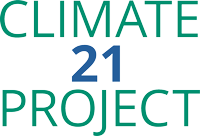Department of the Interior

The Department of Interior’s vast land and mineral management responsibilities, multi-faceted mission, and numerous sub-agencies provide substantial climate mitigation opportunities as well as significant management and policy challenges. DOI manages a huge swath of America’s lands, waters, subsurface resources, and cultural heritage for the benefit of the American people; it implements the nation’s trust responsibilities to Tribes, Alaska Natives, and affiliated island communities; and it provides scientific support for natural resource-related activities.
DOI’s greatest climate mitigation opportunities lie in reducing greenhouse gas emissions from fossil resources owned by the public and Tribes, boosting renewable energy production on public lands and waters, enhancing carbon sequestration on public lands, and indirectly, by educating the public and DOI’s own staff about the science and impacts of climate change. Four bureaus hold most of these mitigation opportunities: Bureau of Land Management (BLM); Bureau of Ocean Energy Management (BOEM); Bureau of Safety and Environmental Enforcement (BSEE); and US Geological Survey (USGS). These and other DOI bureaus also have extensive climate adaptation and resilience opportunities, but this set of recommendations focuses only on mitigation, and it also does not attempt to address the immense needs of Indian Country.
Realizing the full potential of these mitigation opportunities will not be easy. DOI is traditionally focused on other matters, highly resistant to change, and heavily influenced by certain stakeholders (e.g., the oil and gas industry, some local and state governments). DOI’s array of disparate bureaus are unwieldy and sometimes work at cross-purposes. The Secretary and bureau heads are frequently distracted by high profile crises and intractable problems. Like other agencies, DOI has lost many experienced and dedicated staff, and it has a workforce ill-matched to its current needs.
Making climate mitigation happen will require strong leadership and sustained focus from the Secretary and leaders of key bureaus, as well as effective support from the Office of the Solicitor. Restoring staff morale will be critical, and for many DOI staff, climate mitigation also requires a shift in their understanding of their jobs and mission. DOI will need clear direction, ongoing reinforcement, a cross-DOI climate oversight body, action on multiple fronts, and implementation follow-through. Finally, given DOI’s current limitations, near-term progress will require a substantial number of relatively senior political appointees to help get the job done.
Lead Authors


